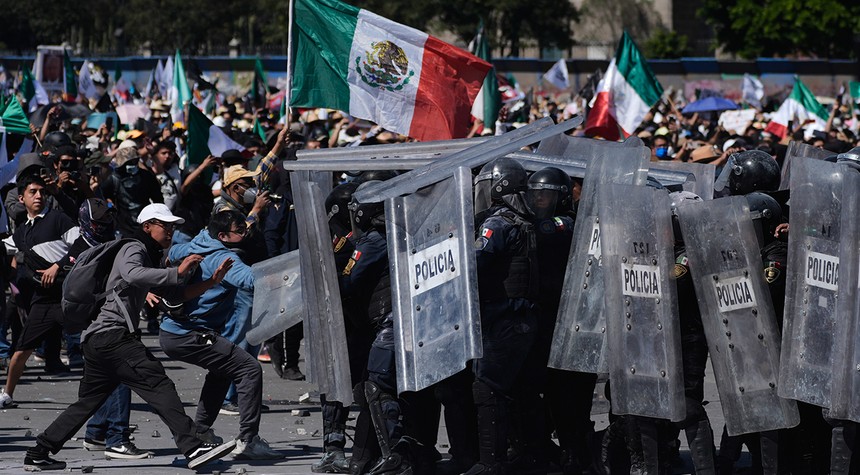Thousands of protesters descended upon Mexico City’s historic Zocalo Square on Saturday, where what began as an anti-government demonstration deteriorated into violent confrontations that left sixty police officers injured and raised serious questions about the stability of America’s southern neighbor.
The demonstration, organized primarily by members of Generation Z, turned violent as hooded protesters breached security formations, dragging riot police from their positions and assaulting them with hammers and chains. Explosive devices were thrown at officers as demonstrators stripped them of protective shields and communication equipment. Plumes of tear gas filled the streets surrounding the National Palace, the seat of Mexico’s executive branch.
The Secretariat of Citizen Security of Mexico City reported that forty officers required hospitalization. Thirty-six sustained contusions, cuts, and minor injuries, while four received specialized care for trauma-related injuries, none considered life-threatening. Twenty individuals were detained, and twenty others face administrative charges.
What makes this incident particularly noteworthy is not merely the violence itself, but what it represents. The protesters were not fringe elements or organized criminal groups. They were young Mexicans, many of them professionals, expressing fundamental grievances about corruption and public safety that strike at the heart of Mexico’s governance crisis.
Arizbeth Garcia, a forty-three-year-old physician, articulated concerns that resonate far beyond the medical community. She marched for increased security and additional funding for the public health system, noting that doctors themselves face the same violence plaguing ordinary citizens. “We are also exposed to the insecurity gripping the country, where you can be murdered and nothing happens,” Garcia stated.
The specter of cartel violence loomed large over the demonstration. Rosa Maria Avila, sixty-five, traveled from Michoacán to march in memory of Uruapan Mayor Carlos Manzo, an anti-crime activist assassinated at a public event earlier this month. Manzo had been shot seven times after publicly condemning President Claudia Sheinbaum for insufficient action against drug cartels.
“The state is dying,” Avila said, describing how Manzo had deployed officers into mountainous regions to confront criminal elements. “He had the guts to confront them.”
Manzo’s final interview with local media in September proved prophetic. He had called for greater determination from Mexico’s president, expressing fear of becoming “just another mayor on the list of those who have been executed.” Despite his fear, he pledged to face the threat with courage.
The Mexico City Police, to their credit, maintained restraint despite severe provocation. Officials emphasized that officers conducted only containment operations and did not respond with force to the attacks.
For the United States, these developments demand attention. Mexico’s internal stability directly affects American interests, from border security to trade relations. When young professionals and concerned citizens feel compelled to take to the streets in violent protest, when mayors who stand against cartels are assassinated with apparent impunity, and when the institutions of government appear incapable of providing basic security, the implications extend well beyond Mexico’s borders.
The question now is whether President Sheinbaum’s government can address the legitimate grievances driving these protests before the situation deteriorates further. The violence in Mexico City on Saturday was not merely a law enforcement challenge. It was a warning sign that demands serious attention from policymakers on both sides of the border.
Related: Congressional Flight Diverted After Passenger Disruption Over Kansas City

